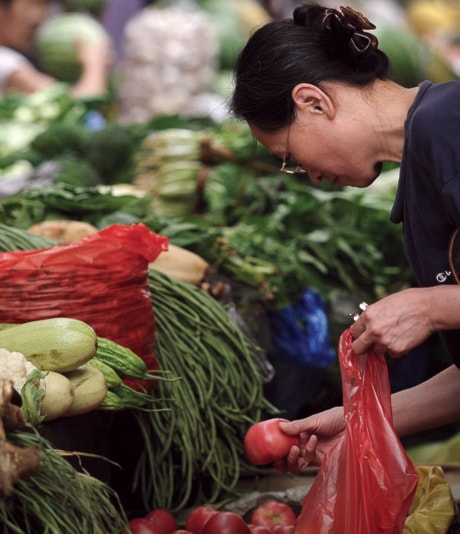BEIJING — China’s industrial growth slowed further in July as Beijing clamped down on a credit boom, fueling expectations it will ease monetary policy to shore up its economic expansion.
Inflation spiked to its highest level this year as summer flooding wrecked crops but analysts said the increase will likely prove temporary.
The government data added to signs China’s boom is cooling and fed expectations Beijing needs to reverse course after imposing lending curbs this year to prevent a bubble in stock and real estate prices.
“This tells us economic growth is continuing to slow,” said economist Zhu Jianfang of Citic Securities in Beijing. “If they don’t make changes, the economy will see a danger of further sliding.”
Economic growth slowed from a blistering 11.9 per cent in the first three months of the year to 10.3 per cent in the second quarter as Beijing rolled back its stimulus after China rebounded quickly from the global slump. Chinese leaders say they want to steer growth to a more sustainable level, but the slowdown was sharper than many analysts expected.
A further fall in Chinese growth could have global repercussions if it hurts demand for U.S. and European factory equipment, industrial components from Asian economies and iron ore.
July growth in factory output slowed for a fifth month to 13.4 per cent over a year earlier, its lowest level this year. Retail sales and investment in factories and other fixed assets also slowed.
The consumer price index, or CPI, rose 3.3 per cent over a year earlier, its fastest rate this year as summer flooding wrecked crops and disrupted shipping. The jump was driven by a 6.8 per cent surge in food costs.
But analysts expect inflation to fade quickly.
“July’s CPI reading is likely to mark the high point for the year,” said Tom Orlik, an analyst for Stone & McCarthy Research Associates, in a report. “With price pressures set to fade, the government will be free to focus on supporting growth.”
A statistics bureau spokesman said the declines in economic indicators for July were “not big” and could be positive for official efforts to improve China’s economic efficiency. He gave no sign the government plans to change policy.
“The fall in economic indexes is mainly a result of the government’s active macro-controls,” said the spokesman, Sheng Laiyun. “Appropriate declines in economic growth are helpful to prevent overheating, and also are good for accelerating economic structural changes.”
Beijing wants to reduce reliance on exports and investment to drive growth by boosting domestic consumer spending and developing technology and service industries. But millions of jobs still depend on export-driven manufacturing and construction.
Private sector economists have lowered forecasts of China’s growth this year due to the credit curbs but say it easily should meet the government’s target of 8 per cent.
The slowdown could complicate moves by Beijing to allow China’s currency, the yuan, to rise in value. China said in June it would allow a more flexible exchange rate after holding the yuan steady against the dollar since late 2008. But as demand at home weakens, officials will face pressure from exporters and their allies in government to avoid any steps that might make Chinese goods more expensive abroad.
Growth in spending on factories, real estate and other fixed assets in the first seven months of the year fell to 24.9 per cent, down from 25.5 per cent for the first half, the National Bureau of Statistics reported.
Retail sales rose 17.9 per cent, down from 18.2 per cent growth for the first half of the year.
Demand for steel, cement and other building materials has faded as Beijing winds down its 4 trillion yuan ($586 billion) stimulus, which pumped money into the economy through higher spending on building public works.
An array of other indicators from manufacturing orders to auto sales also show growth steadily declining.
July housing prices held steady from June levels in a sign the government’s lending curbs were working. But that easing has come at the cost of a slump in sales and construction.
The curbs have sharply cut bank lending. The central bank reported Wednesday that total lending by China’s banks fell to 532.8 billion yuan ($78.7 billion), down nearly 12 per cent from June’s 603.4 billion.
Banks last year lent a record 9.6 billion yuan ($1.4 trillion), or an average of 800 billion yuan per month, under orders to support Beijing’s stimulus.
Also in July, growth in exports fell to 38.1 per cent from June’s 43.9 per cent. Australian miners and other companies that have enjoyed a windfall from Chinese demand have warned that their sales growth will slow.
Manufacturing also is under pressure from a government mandate to improve energy efficiency. The government this week ordered 2,087 steel and cement mills and other factories that are deemed too wasteful to close by the end of September.
———
Associated Press researcher Bonnie Cao contributed to this report.
———
National Bureau of Statistics (in Chinese): www.stats.gov.cn
